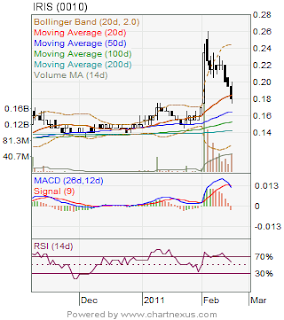Introduction
Investing in penny stocks can be an exhilarating endeavor for those seeking high-risk, high-reward opportunities. These stocks, typically priced under $5 per share, have the potential to make explosive gains seemingly overnight.
However, navigating the volatile world of penny stocks requires careful consideration and a deep understanding of market trends and company fundamentals.
In this article, we will explore the characteristics of penny stocks, factors influencing their performance, strategies for identifying promising options, and the inherent risks associated with investing in this exciting yet challenging market.
Introduction to Penny Stocks
Penny stocks are low-priced securities that trade outside major stock exchanges. They represent small companies with limited market capitalization and lesser-known brands. These stocks can be highly volatile due to their low liquidity and susceptibility to manipulation.
Investing in penny stocks comes with substantial risk but also offers the potential for significant gains. Investors must be prepared to withstand extreme volatility and potential losses when engaging in penny stock trading. Thorough research and caution are necessary for successful navigation of this unique segment of the stock market.
Factors Influencing Penny Stock Performance
Market trends, positive news catalysts, and company fundamentals all influence the performance of penny stocks. Identifying sectors with growth opportunities helps investors pinpoint high-potential penny stocks. News catalysts like product launches or partnerships can trigger price movements.
Evaluating financial indicators and company fundamentals helps identify penny stocks with long-term potential. Understanding these factors is crucial for making informed investment decisions in the world of penny stock trading.
Identifying Promising Penny Stocks
To identify promising penny stocks, investors should analyze recent market trends to uncover sectors with growth opportunities. Industries like renewable energy, healthcare technology, or e-commerce may offer potential for high-potential penny stock investments.
Additionally, investigating upcoming events such as earnings releases or product launches can trigger surges in value for certain penny stocks. By staying informed and conducting thorough research on these events, investors can position themselves strategically.
Lastly, assessing key financial indicators like revenue growth and profit margins is crucial. Companies with strong financial performance are more likely to weather market volatility and deliver substantial returns.
Overall, a combination of market analysis, event investigation, and financial assessment can help investors identify promising penny stocks.
Case Study: XYZ Inc.
XYZ Inc., an under-the-radar penny stock, is quietly gaining momentum in the market. With innovative products and strategic partnerships, the company shows potential for explosive growth. By analyzing market trends, positive news catalysts, and company fundamentals, investors can uncover the promising aspects behind XYZ Inc.’s rise.
Examining market trends reveals increasing demand for XYZ Inc.’s products and a growing customer base. Positive news catalysts such as major contracts and regulatory approvals further boost its potential for rapid value appreciation.
Evaluating the company’s financial health and management team quality provides a comprehensive understanding of its growth prospects.
Investors should note that investing in penny stocks carries risks due to their volatility. Thorough research, analysis, and diversification are essential when considering any investment opportunity.
Risks and Challenges of Penny Stock Investing
Investing in penny stocks carries significant risks and challenges. These include low liquidity and trading volume, making it difficult to buy or sell shares at desired prices. Penny stocks are also prone to manipulation by unscrupulous individuals or groups due to limited regulatory oversight.
Additionally, the lack of regulation exposes investors to higher risks of fraud or misleading information. Penny stocks are highly volatile, and finding reliable information on them can be challenging. To navigate these risks, thorough research, caution, and a disciplined approach are essential in penny stock investing.
Strategies for Successful Penny Stock Investing
To succeed in penny stock investing, it’s crucial to employ the right strategies. Here are three key approaches that can help mitigate risks and increase your chances of success:
-
Thorough Research and Due Diligence: Before investing in any penny stock, conduct thorough research. Analyze financial statements, company news, industry trends, and potential risks. By doing your due diligence, you can make informed decisions and reduce the chances of falling victim to scams or poor investments.
-
Realistic Expectations and Diversification: Set realistic expectations for your penny stock investments. While explosive gains are possible, balance these opportunities with a diversified portfolio that includes more stable assets.
Diversification helps spread risk across different sectors and reduces exposure to volatility in any single penny stock.
- Utilize Stop-Loss Orders: Manage risk effectively by considering stop-loss orders when trading penny stocks. These orders automatically trigger a sale if the stock reaches a predetermined price point, limiting potential losses by exiting positions before significant declines occur.
By implementing these strategies, you can navigate the challenges of penny stock investing while increasing your chances of success. Remember to stay informed, adapt your strategies as needed, and always approach this market with caution.
Conclusion: Navigating the Penny Stock Market
[lyte id=’1SOjro__LGk’]






